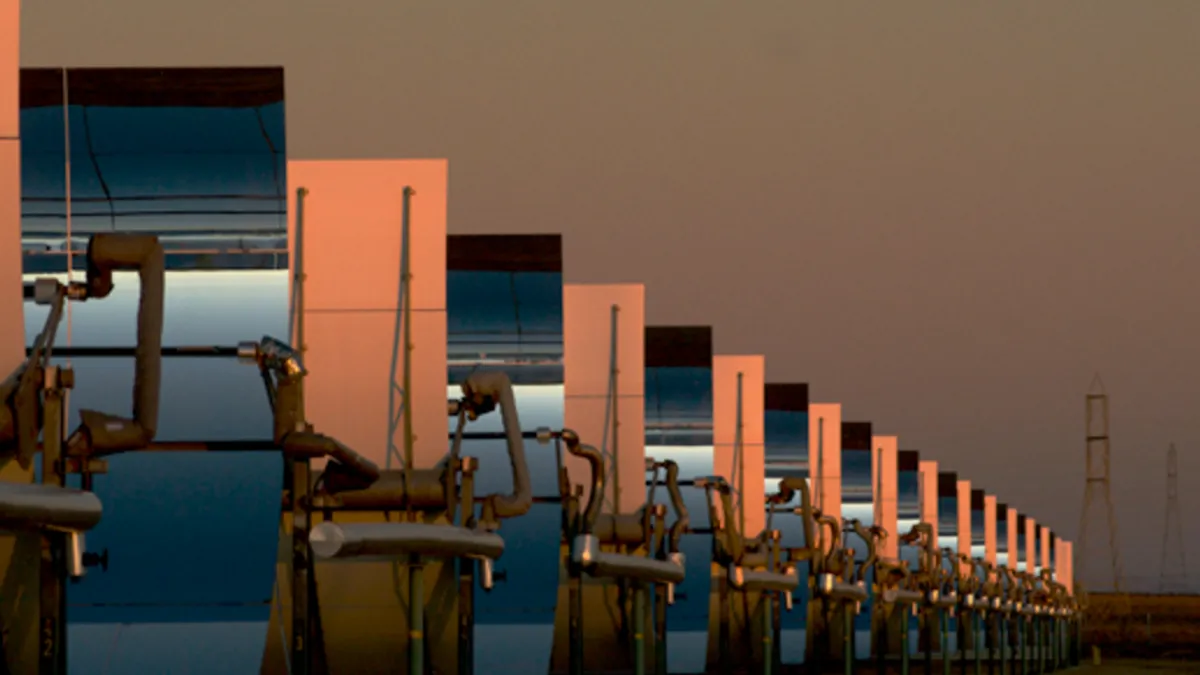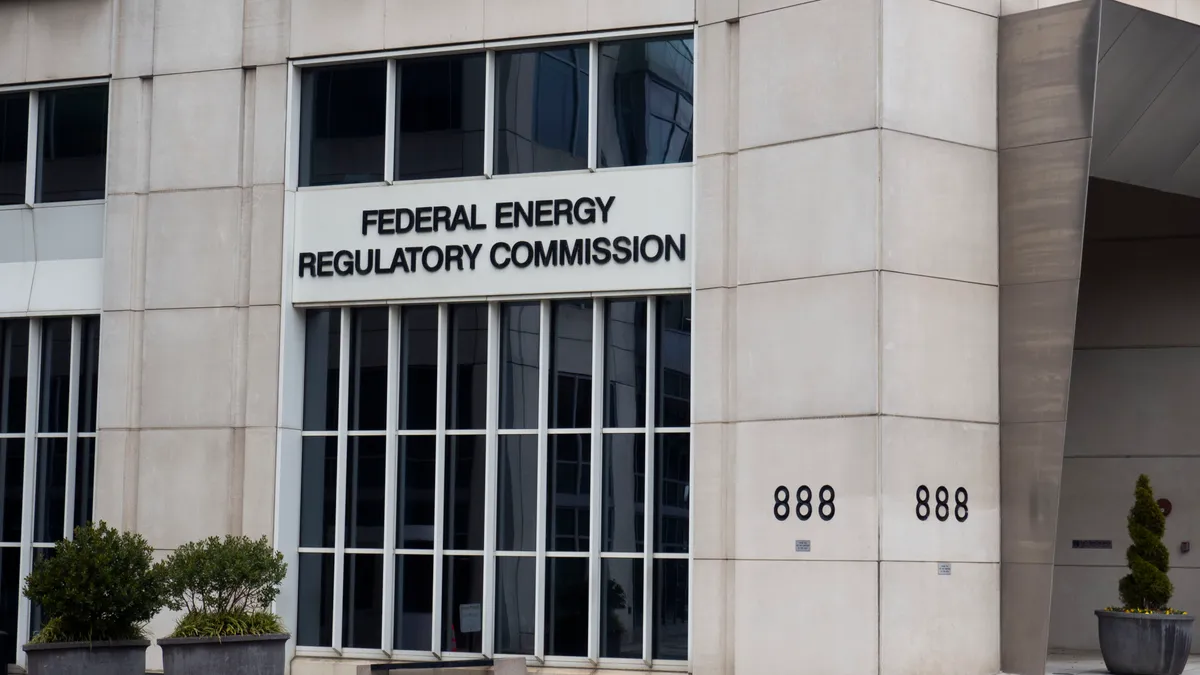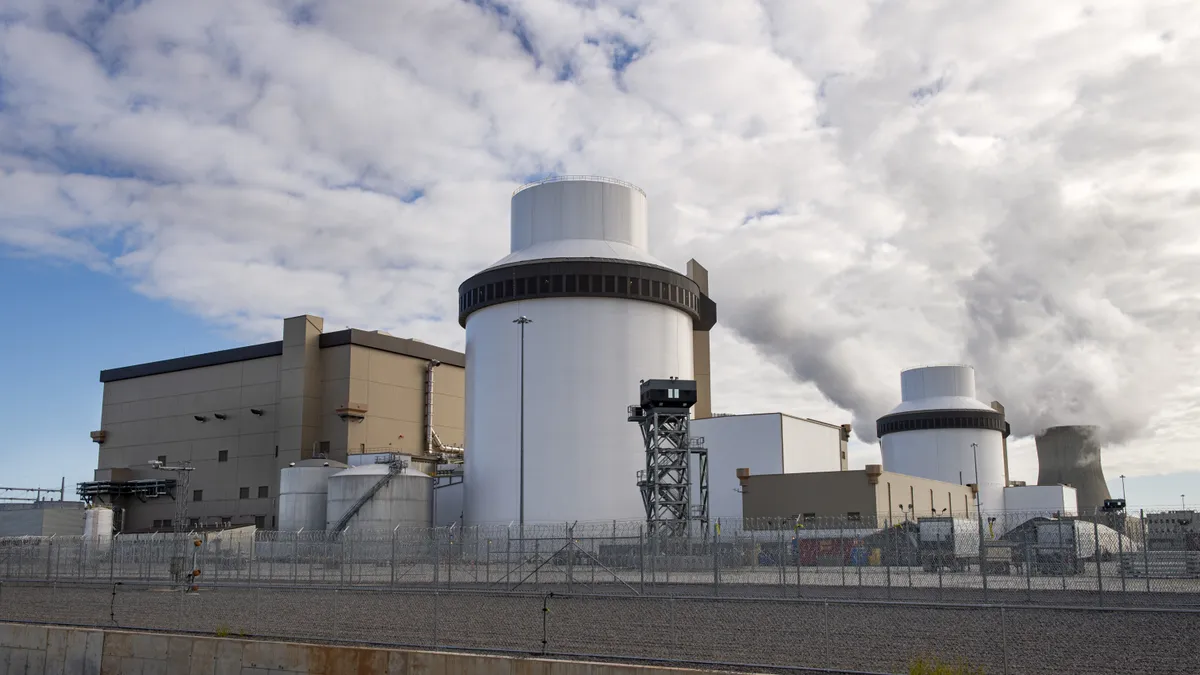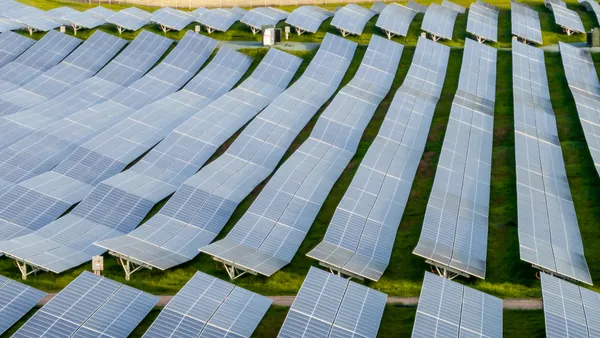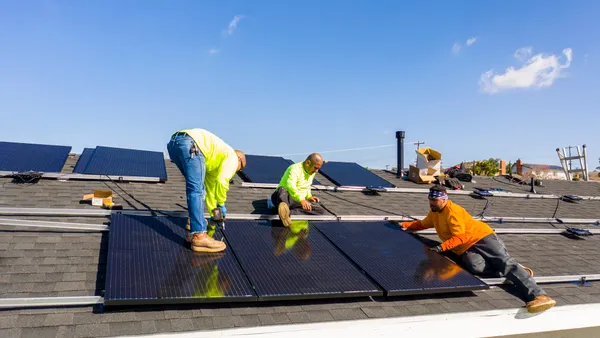Dive Brief:
- According to the Las Vegas Review-Journal, the Crescent Dunes power plant in Nevada is back online after a lengthy outage caused by a leak in a container of molten salt.
- Owned by SolarReserve, the 110 MW concentrated solar power facility is located about 200 miles from Las Vegas and went online in 2015. The project uses molten salt to provide 1,100 MWh of energy storage capability.
- The project sells power to NV Energy under a 25-year power purchase agreement for $0.135/kWh, about twice the cost of power from a gas-fired plant.
Dive Insight:
Details are scant, but utility officials reportedly confirm the Crescent Dunes plant is back up and running. After coming online in late 2015, the project was shut down last October when the leak was discovered. Repairs were supposed to be complete in January, but wound up taking longer. A spokesperson for NV Energy declined to disclose further details.
According to the company, the Crescent Dunes project is the first utility-scale facility in the world to feature advanced molten salt power tower energy storage capabilities. The project can power 75,000 homes in Nevada during peak demand periods, day and night.
Concentrated solar projects aim mirrored reflectors, heliostats, at a “power tower” where the solar energy turns water into steam that drives a conventional steam generator. Using molten salt instead of water enables the heat to be retained and power to be generated into the evening.
But CSP projects are not cheap. An analysis by Lazard last year showed the average levelized cost of CSP was more than twice the cost of utility-scale solar PV: $119 to $181/MWh compared to $50 to $60/MWh.
Last year, SolarReserve also floated plans to build a $5 billion, 2,000 MW project in Nevada, but it's unclear whether or not the project has moved forward. An analyst for Bloomberg New Energy Finance told Bloomberg that absent significant federal and state subsidies beyond the investment tax credit, "there is virtually no way this project will be able to deliver electricity at a price that’s competitive today, much less five years from now."



